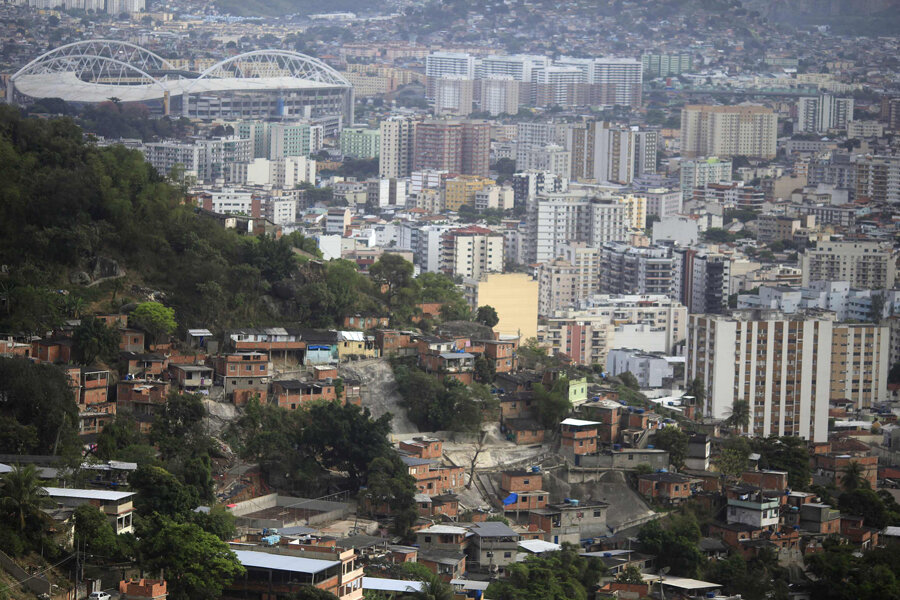Global corruption: How does Latin America stack up?
Loading...
| Rio de Janeiro
Businessman Dale Smith hails from New Zealand, which is tied with Denmark as the world’s least corrupt nation, according to watchdog group Transparency International. But Mr. Smith is working in Brazil, which is ranked 72nd worldwide and is located in a region notorious for corruption.
The result, he says, is compromise.
“If you came here and did everything correctly, you’d fail,” says Smith, who has several businesses in Brazil. “You’ve got to flow with the river a little bit.”
That reality is underscored by Transparency International’s annual Corruption Perceptions Index, released today. The report found that corruption worsened in Latin America over the past year as economic heavyweights Brazil and Mexico didn’t improve and gang-plagued Central America worsened. The index reveals that all of the Americas – spanning from Alaska to Argentina – are now perceived as more corrupt than all of Asia-Pacific – a region that Transparency International classifies from secretive North Korea to war-torn Afghanistan.
That should be a “wake up call” to Latin America in particular, says Alejandro Salas, Americas director for Transparency International. The region often proclaims loudly that it’s against corruption, with 31 countries now signatories to the Organization of American States' Convention Against Corruption. Meanwhile, 17 countries participate in anti-corruption initiative Open Government Partnership, which requires participants to deliver an action plan and commit to independent progress reporting. Now the region needs to embrace those laws more fully.
“Latin America has a lot of anti-corruption infrastructure in place,” Mr. Salas says. “The difference is when you take it into practice and actually enforce the laws that you are signing.”
According to Berlin-based organization, the Americas' most transparent nation is Canada (9th worldwide) while the least is Haiti (163rd worldwide). The US ties with Uruguay for 19th place, while Brazil and Mexico rank 72 and 106, respectively. The 177-nation ranking is based on 13 data sources, from the World Bank to the Economist Intelligence Unit.
In Latin America, Guatemala showed the greatest increase in corruption over the past year, falling 10 places in the index to 123rd as gang violence and drug trafficking continues to spill over from Mexico. Regional neighbors such as Costa Rica, which has also seen an uptick in violence, also fell one spot to 49th.
“Organized crime and violence are undermining the strength of institutions,” Salas told the Monitor by telephone. "[W]hen we look at a country like Costa Rica, which has always been a good example for the region, lately it’s more common to read about it being part of drug trade route where we are discovering corruption schemes.”
Brazil and Mexico are also criticized for failing to improve in the rankings, he adds.
“Countries like Brazil should be an example for how to improve governance and corruption,” he says, suggesting that Latin American nations are more interested in justifying corruption than in tackling the problem. “There is no excuse for countries like Brazil to not improve.”
Salas points to examples of corruption across Latin America: rampant police-bribing in Bolivia, vote-buying in Venezuela, and political nepotism in Paraguay. All are part of a culture of corruption that has failed to disappear despite the region’s economic growth and democratic reforms.
There are signs of improvement. In Brazil, the judiciary has taken on a major corruption case against dozens of high-profile politicians and bankers connected to former President Luiz Inácio Lula da Silva. The case, known as the Mensalão, or "the big monthly payoff," resulted in its first prison sentences this month.
The trial is important because it shows that “it doesn’t matter if you’re a close ally to the president, you will still pay if you engage in corruption,” Salas says. “They (Brazil) have to do more, but this is a start.”






